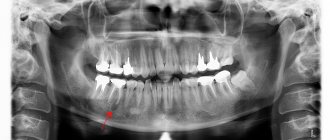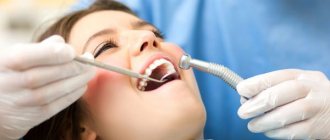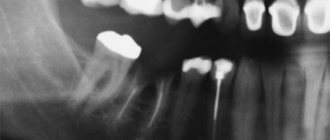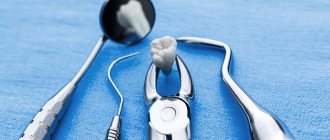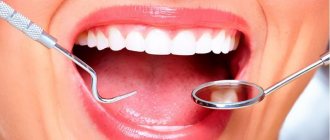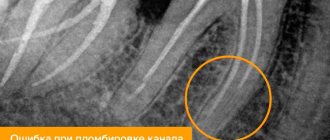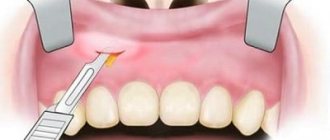At this stage of development of dental science, specialists are increasingly opting for atraumatic tooth extraction. This is the most painless and gentle procedure. After extraction, the bone walls of the socket are kept intact so that dental implantation is possible in the future without bone grafting or sinus lifting.
Tooth extraction is a complex surgical procedure that can result in damage to the bone socket, bleeding, and swelling. Thanks to the latest atraumatic removal technique, which is performed minimally invasively and with comfort for the patient, complications can be avoided. The walls of the tooth socket are preserved after removal, therefore, implantation is possible in the future.
At the innovative dental clinic "Implantmaster" in Moscow, atraumatic tooth extraction is performed by a maxillofacial surgeon. Our doctors improve themselves professionally and attend scientific conferences. Patients can always count on quality treatment. We are able to solve complex problems quickly, setting reasonable prices for services.
Next, you will learn how atraumatic removal is performed and its benefits. Let's get acquainted with the indications for this technique. Let's talk about the differences from regular removal.
Get a consultation
We will answer all your questions before visiting the clinic!
+7
Online registration
Content
1 The difference between atraumatic tooth extraction and conventional
2 Advantages of atraumatic tooth extraction
3 Indications for atraumatic tooth extraction
4 Stages of atraumatic tooth extraction 4.1 Comprehensive diagnostics
4.2 Preparation of membrane from plasma
4.3 Removal with a piezo scalpel and periotome
4.4 Application of blood plasma membrane
5 Disadvantages of piezosurgery for tooth extraction
6 Dental implantation immediately after extraction
7 Prices for atraumatic tooth extraction
The difference between atraumatic tooth extraction and conventional
Atraumatic tooth extraction involves extraction without forceps or burs. The ligaments are cut off from the dental unit, then segmentation is carried out using microsurgical blades. Subsequent extraction of fragments is easy. The procedure is performed safely, painlessly and comfortably.
The main advantage of gentle tooth extraction is that the healing of the bone hole proceeds much faster and the relief of the gum tissue is preserved. In the process of extracting fragments, the doctor does not affect the bone structures, maintaining the volume of the jaw bone around the hole. All necessary conditions are created for subsequent stable and complete implantation, and soon aesthetic prosthetics. This procedure makes it possible to immediately load the area with prosthetic structures immediately after tooth extraction.
How to avoid complications
Inflammatory processes in the postoperative period usually occur due to the fault of patients who do not follow several basic rules. The dentist will tell you what to do after removing a wisdom tooth or any other dental unit to prevent negative consequences. Standard recommendations are as follows:
- Do not touch the blood clot in the first three days so as not to damage it. This clot naturally reliably prevents infection from entering the wound.
- Follow the advice on nutrition and oral care - eat only approved foods, brush your teeth carefully.
- Take antibiotics prescribed by your doctor, especially in case of periodontal disease or after removing a significant number of teeth.
Complications can also arise due to the fault of the dentist. In addition to infection of the wound with unsterile instruments, there is a risk of jaw fracture, damage to nearby teeth, and incomplete removal. Such situations can be avoided; you just need to choose a clinic with an impeccable reputation. Yulisty employs highly qualified dental surgeons, so the possibility of medical error is completely excluded.
Advantages of atraumatic tooth extraction
- The risk of infection of the bone socket is minimal due to the absence of trauma to the surrounding soft and hard tissues.
- Low likelihood of bleeding and various complications.
- Tissue regeneration occurs faster than with conventional removal.
- The bone plate between the roots and the physiological structure of the mucous membrane are preserved.
- There is no heating or soft tissue burns.
- The emphasis is on maintaining the original volume of the jawbone.
- The procedure is performed under local anesthesia with gentle drugs to minimize damage to nerve endings.
- Atraumatic tooth extraction with a piezosurgical scalpel produces coagulation of blood vessels, minimizing the risk of bleeding. It has an antiseptic and biostimulating effect.
Methods and tools for difficult removal
Special instruments are used with soft periodontal tissues:
- tongs/elevators
. They are used to remove the roots of multi-rooted teeth and severely damaged units: the dentist loosens the tooth with the root using an elevator, dislocates it with forceps, and removes it from the gums. For individual groups, there are various forceps, the shape of which is determined by their purpose: for roots, units with a crown, for teeth of the upper/lower jaw; - chisel
_ The device is used when removing the wall (outer) of the alveolar ridge, dense bone structure - when it is impossible to place an elevator in the area between the root and the alveolus: the surgeon places the chisel in the working segment, performs 2-3 blows, dislocates and removes the tooth; - drill
_ Helps the doctor when sawing a unit, dividing roots, removing bone tissue. During the manipulation, the mucous membranes and tissues are damaged to a minimum extent.
Our team of doctors
Maxillofacial surgeon, Implantologist
Bocharov Maxim Viktorovich
Experience: 11 years
Orthopedist, Neuromuscular dentist
Stepanov Andrey Vasilievich
Experience: 22 years
Endodontist, Therapist
Skalet Yana Alexandrovna
Experience: 22 years
Orthopedic dentist
Tsoi Sergey Konstantinovich
Experience: 19 years
Endodontist, Therapist, Orthopedist
Varvyanskaya Anastasia Andreevna
Experience: 6 years
Dentist-orthodontist
Enikeeva Anna Stanislavovna
Experience: 3 years
Indications for atraumatic tooth extraction
- Destruction of the tooth crown of more than 3/4, due to injury or carious process.
- It is not possible to carry out high-quality treatment or restoration of the tooth.
- Severe crowding, lack of space in the dentition, incorrect position.
- Complication of pulpitis or periodontitis.
- Purulent inflammation around the tooth root, cysts that cannot be treated without surgery.
- Creation of space for implant installation.
Do I need to remove uncut “eights”?
Not all people develop their “8s” by the right age. Sometimes they remain in the anlage, that is, retained (not erupted). When to remove them:
- if on an x-ray we see that the wisdom teeth abut adjacent molars (seventh teeth). There is a risk that wisdom teeth will “eat” into an adjacent tooth inside the bone. And then you will have to remove 2 teeth.
- The pressure of the “eights” on neighboring teeth can cause caries of the root of the “sevens” - our main chewing teeth.
- If the wisdom teeth are large and there is no place for them in the oral cavity. There is a high risk that they will collide with the dentition, and a crowded position of the front teeth will appear.
- During implantation next to unerupted figure eights. It is worth removing the tooth so that it cannot damage the implant in the future.
Stages of atraumatic tooth extraction
The essence of atraumatic extraction is the ultrasonic division of the tooth into the required number of fragments (depending on the number of roots) and their careful extraction. Thus, the integrity of the bone partitions between the roots and the socket walls is maintained, which plays an important role in regenerative processes. The further possibility of implantation and prosthetics depends on this.
Manipulations during atraumatic tooth extraction with ultrasound are similar to standard operations and are carried out by specialists from the Implantmaster clinic at a reasonable price. The only difference is the tools – an ultrasound machine and conventional elevators and forceps. The procedure consists of several stages:
1. Anesthesia.
All surgical interventions are performed under pain relief using local anesthesia. Our doctors perform atraumatic removal of all teeth, even multi-rooted ones.
2. Surgical intervention.
To prevent breakage of the bone septum between the roots, the maxillofacial surgeon and implant surgeon separates them from each other. Using a periotome, the marginal gum is gently moved away from the tooth to preserve its integrity. Next, using an innovative piezo scalpel - the VarioSurg LED ultrasonic surgical system from NSK (made in Japan) - the roots are separated and segmented. Removing fragments becomes safe, painless and as comfortable as possible for the patient.
3. Application of platelet membranes.
After all dental fragments are removed, platelet mass is injected into the socket. The mass contains cell growth factors that help accelerate tissue regeneration and healing. This prepares hard and soft tissues for further prosthetics on implants.
After atraumatic tooth extraction, the hole heals quickly and without complications such as swelling, bruising and bleeding. The most important thing is that the patient must strictly follow all the doctor’s recommendations.
Comprehensive diagnostics
Before performing atraumatic tooth extraction with ultrasound, it is necessary to consult a doctor and carry out a number of diagnostic measures.
1. Initial consultation.
To carry out an innovative dental technique of atraumatic tooth extraction with ultrasound at a reasonable price, the Implantmaster clinic in Moscow has all the necessary latest equipment. Before carrying out medical manipulations, a thorough visual and instrumental examination of the oral cavity is carried out at the consultation. Next, the specialist will order an x-ray.
We perform cone beam computed tomography. The pictures are more accurate, and the Rg radiation is even less. Thanks to this, the most accurate diagnosis can be made.
Our doctors use a Labomed Magna dental microscope to thoroughly examine the condition of teeth and surrounding tissues.
2. Analyzes.
An examination is carried out to determine contraindications to surgery. The specialist, using diagnostic data, identifies the possibilities of saving the tooth. And if this is not possible, then a plan for the operation is drawn up.
The doctor answers all the patient’s questions. He explains in detail the surgical procedure and schedules an appointment.
Immediately after ultrasound exposure, it can be implanted. Our highly qualified specialists use the latest materials and technologies, such as Straumann implants. Their osseointegration takes place in 3-5 weeks, and they can also be installed when the bone level is small.
How is the operation performed?
Tooth extraction can be simple or surgical. These methods have a number of differences. A simple extraction is carried out on the teeth with the ability to fix the root in forceps. Any tooth extraction operation begins with an examination and x-ray of the patient’s oral cavity. This allows the dentist to understand what complications may arise and which technique is best to use in each specific case.
Simple removal takes place using local anesthesia and consists of the following steps:
- Administration of anesthetic;
- Separation of the neck of the tooth from the gum tissue using a smoother;
- Applying forceps to the tooth;
- Closing the cheeks of the forceps and fixing them;
- Tooth dislocation. To remove a single-rooted tooth, it is rotated around its axis, while a multi-rooted tooth is removed by rocking back and forth. This is necessary to weaken the connection of the tooth with the bone tissue of the jaw.
- Removing a tooth from the alveolus.
Dentists resort to surgical removal in cases where there is no access to the damaged tooth. It may be hidden under mucous membrane or bone. To extract such a tooth, you will have to cut the gum and remove the bone tissue above the affected tooth. It is possible to cut the tooth into several pieces to make it easier to remove.
This is what a complex tooth extraction looks like in the video
Get a consultation
We will answer all your questions before visiting the clinic!
+7
Online registration
Preparation of plasma membrane
The membrane is made in the morning or 4 hours after eating (water can be drunk, even necessary). The procedure takes about half an hour.
- In the treatment room, blood is taken from a vein in the patient's elbow.
- The biomaterial is placed in a specialized apparatus, where it is centrifuged to separate the plasma.
- In laboratory conditions, doctors obtain the necessary plasma and saturate it with anticoagulants.
The procedure is quite quick and painless. To minimize risks, you should carefully approach the search for a good clinic and an experienced doctor. Implantmaster employs highly qualified specialists who regularly improve their skills and knowledge.
Removal using a piezo scalpel with a periotome
At the Implantmaster clinic, all surgical interventions are performed using anesthesia. Our specialists perform atraumatic removal of any teeth using ultrasound.
The dentist-surgeon, first of all, uses a periotome to separate the adjacent gum from the tooth on all sides. To preserve the bone septum between the roots, the doctor separates the roots from each other. An innovative piezo scalpel - the VarioSurg LED ultrasonic surgical system - separates the roots from the coronal part and their subsequent segmentation. Removal is as safe and painless as possible. Even the most difficult operations are carried out without further complications.
Application of blood plasma membrane
The use of platelet membranes containing cell growth factors accelerates tissue regeneration and healing. During surgery, the membrane covers the defect, implanted bone material or artificial root. Sometimes a fibrin clot is combined with the patient's bone material and introduced into the defect area. Afterwards, suture material is applied. If the membrane was installed to prevent inflammation, then sutures are not applied. It is not advisable to rinse your mouth during the first 3 days.
The introduction of a platelet membrane naturally activates cellular growth factors of the jaw bone and periodontal tissues, increasing the rate of recovery. Regeneration and acceptance of implants or bone material by the body is much faster, and the likelihood of inflammation is significantly minimized.
Blood plasma membranes have a positive effect on:
- increase in the rate of cellular growth factor in the bone after implantation;
- absence of allergies that could occur when interacting with foreign materials;
- accelerated gum recovery after implantation or plastic surgery;
- prevention of inflammation around the implant;
- reduction of swelling and pain after surgical procedures;
- optimal tightening of the socket after tooth extraction;
- minimizing inflammation during gingival curettage and cleaning periodontal pockets.
Dystopic tooth: is it possible not to remove it?
Timely removal of an abnormally located tooth will help preserve the health of your dentofacial apparatus and oral mucosa.
An incorrectly erupted tooth often causes problems with chewing food. Speech functions are also impaired, the bite suffers, which is why patients who do not remove dystopic teeth often experience diseases of the temporomandibular joint.
A dystopic tooth can damage a neighboring tooth, as well as disrupt the integrity of the epithelial lining of the oral cavity. If such a tooth erupts towards the cheek or tongue, their mucous membrane is constantly damaged due to contact with the sharp tubercles of its crown. As a result of friction, long-term non-healing wounds are formed on the oral mucosa. Constant trauma to epithelial tissue leads to the occurrence of leukoplakia and decubital ulcers, which after some time can transform into malignant tumors of the oral cavity.
A dystopic tooth, especially the “eight” tooth, located on the lower jaw, may be subject to partial or complete retention. This is a condition in which the wisdom tooth is not able to come to the surface, and therefore is half or completely hidden under a layer of gum or bone tissue. An incompletely erupted and, moreover, dystopic wisdom tooth poses a serious danger to its “neighbor,” the second molar.
As it grows, the “eight” begins to “rest” against the subgingival part of the adjacent tooth and provokes the development of caries on it. Since the carious process develops on the neck or on the root of the tooth, which are located in the periodontal tissues and are not visible to the naked eye, at first the owner of a dystopic impacted tooth may not suspect anything is wrong. He usually consults a doctor after severe pain appears. Unfortunately, in most cases, both the “causal” tooth and the “seven” damaged by the carious process must be removed.
Disadvantages of piezosurgery for tooth extraction
1. The cost of atraumatic tooth extraction can be considered a disadvantage. It is slightly higher than with classical extraction. The cost is made up of professional training, training of a dental surgeon and the use of innovative, expensive equipment. In practice, the safety and reliability of the procedure compensate for the price component.
2. Limited prevalence of the technique. Not all clinics have the necessary equipment and staff training, especially clinics.
Disadvantages of existing methods
Existing methods of tooth extraction have several disadvantages:
- Traumaticity.
- Possibility of tooth damage, formation of fragments that are difficult to remove.
- There is a possibility of damage to bone tissue during problematic removal, which can subsequently lead to difficulties with implantation.
- There may be a complication in the form of inflammation of regional lymph nodes.
- Inevitable damage to soft tissues, long healing period.
Dental implantation immediately after extraction
The single-stage implantation operation involves installing an artificial root directly into the socket of the extracted tooth. All manipulations can be performed in one visit. This procedure is most in demand when prosthetics are needed in the smile area. The primary goal is to achieve high aesthetics of restorations.
With the help of one-stage implantation, it is possible to significantly reduce the rehabilitation period. It is also possible to fix a temporary prosthesis, allowing the patient to immediately begin the process of chewing food.
Our highly qualified specialists use Straumann and Osstem implants. Healing of Straumann implants occurs within a month, and even a small level of bone will not interfere with installation.
Features of treatment with the piezo apparatus
The piezosurgical device reveals the widest possibilities, including:
- Removal of impacted, dystopic teeth.
- Reducing the time of operations.
- No bleeding.
- No overheating of tissues.
- Possibility of performing operations on patients with diseases of the cardiovascular system. To remove a tooth from a patient with a bleeding disorder can only be done using ultrasound.
- No contact with the device during treatment.
- Minimal risk of complications.
- Minimum rehabilitation period.
Prices for atraumatic tooth extraction
Tooth extraction is simple:
- X-ray images
- Anesthesia
- Removal of a tooth
- Applying and removing sutures
- Postoperative examinations
Price : from 3,000 ₽ to 7,800 ₽
Tooth extraction is complicated
| from 10,000 to 20,00 ₽ |


